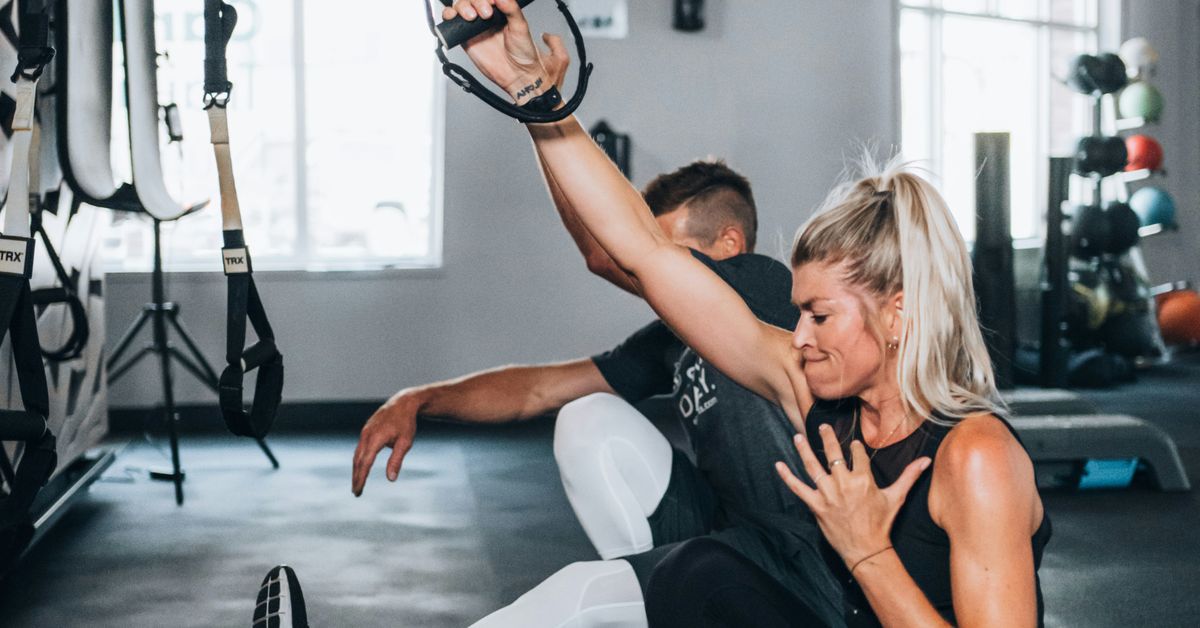Transform Your Gains: Unconventional Strength Training Hacks You’ve Never Tried
In the realm of strength training, the quest for gains can sometimes feel like a never-ending treadmill—figuratively and literally. We’ve all been there: sweating it out in the gym, trying to lift more and push harder, only to find ourselves plateauing just when we thought we were on the brink of something great. What if I told you that there are unconventional strength training hacks out there, waiting just beneath the surface, which could transform your gains in ways you never imagined? Buckle up, because it’s time to shake things up!
The Power of Unilateral Training
Let’s kick things off with unilateral training. Now, I remember the first time I stumbled upon this technique; I was at a local gym, and there it was—an empty cable machine just calling my name. Instead of the usual bench press or squat, I opted for a single-arm row. I noticed something peculiar: my core had to engage more vigorously to stabilize. This single swap ignited a flame of curiosity within me.
Unilateral training, the practice of working one limb at a time, has several benefits. Not only does it help in correcting muscle imbalances (trust me, those lopsided gains are sneaky), but it also enhances core stability and improves overall coordination. Studies suggest that through unilateral movements, athletes can tap into a greater range of motion and functional strength. Think about it: when was the last time you had to lift something heavy using both arms evenly? Life throws curveballs, and being prepared for those moments is crucial.
Some popular unilateral exercises include:
- Single-arm dumbbell rows
- Single-leg deadlifts
- Single-arm overhead presses
- Single-leg squats
So, next time you hit the gym, consider mixing in some unilateral work. It might feel a bit awkward at first, but the gains are well worth it. And who knows? You might just impress that cute gym-goer with your newfound stability.
Embrace the Power of Pause
Alright, let’s pivot to something a little less conventional but equally effective: the pause technique. Now, I can hear the skeptics already—“Pause? Isn’t that just a waste of time?” But hold on! This isn’t about taking a leisurely coffee break mid-set. It’s about pausing during the most challenging part of a lift.
The pause technique involves stopping for a brief moment at the most difficult point of a movement. For instance, during a squat, pause just below parallel before pushing back up. This method increases time under tension, which is essential for muscle growth. Additionally, it enhances strength in sticking points and improves overall control of the lift. (I know, it sounds complicated, but bear with me.)
Research indicates that implementing pause reps can lead to significant hypertrophy gains. In fact, many elite athletes swear by this technique. You could even combine it with your favorite compound lifts—squats, bench presses, and deadlifts—adding an extra layer of challenge. The next time you find yourself at the bottom of a squat, take a breath, hold it for a second, and then rise. Your muscles will thank you later.
Try the Eccentric Focus
Speaking of time under tension, let’s dive into the eccentric phase of lifting. Eccentric movements occur when you lower the weight—think of it as the “negative” part of the lift. While most gym-goers zip through this phase, focusing instead on explosive lifts, they might be missing out on some serious strength-building opportunities.
Incorporating a slow and controlled eccentric phase can lead to increased muscle damage (in a good way), which is essential for growth. A good rule of thumb is to take at least three to five seconds to lower the weight. This technique forces your muscles to work harder and can dramatically boost your strength gains.
Examples of eccentric-focused exercises include:
- Slow eccentric squats
- Negative pull-ups
- Controlled bench press lowers
Next time you’re feeling adventurous, give the eccentric focus a whirl. Just be prepared—your muscles might be a bit cranky the next day!
Incorporate Unusual Equipment
Now, let’s talk about something that may raise some eyebrows: unusual equipment. When was the last time you looked at a sandbag or a kettlebell and thought, “I could really get strong using that?” Most of us tend to stick to the tried-and-true dumbbells and barbells. But, oh boy, there’s a world of unconventional tools out there that can take your training to the next level.
Sandbags, Bulgarian bags, and even battle ropes can provide unique challenges that standard weights simply can’t match. These tools often require you to engage your stabilizing muscles more, leading to a more comprehensive workout. Plus, let’s be real—it’s a lot more fun to toss around a sandbag than to do a hundred curls. (And it makes for a great Instagram post too!)
Some unconventional pieces of equipment to consider:
- Sandbags for carries and squats
- Kettlebells for swings and Turkish get-ups
- Battle ropes for full-body conditioning
So the next time you’re at the gym, take a leap of faith and try some unusual equipment. Your muscles will thank you—and you might even discover a new favorite workout.
Get Creative with Bodyweight Training
Bodyweight training is often seen as a beginner’s tool, but let me tell you—there’s a treasure trove of creative exercises waiting to be explored. I remember when I first attempted a planche; it was more of a graceful flop than an impressive hold. However, the sheer determination to master it opened a door to a world of strength I never knew existed.
Incorporating advanced bodyweight exercises like muscle-ups, handstand push-ups, or one-arm push-ups can not only improve your strength but also enhance your body control. They challenge your muscles in ways that traditional weightlifting can’t, making them a fantastic addition to your regimen.
Consider mixing bodyweight movements into your routine with exercises like:
- One-arm push-ups
- Handstand holds
- Planche leans
- Pistol squats
And guess what? You can do these anywhere—at home, in the park, or even when you’re waiting for your laundry to finish. No equipment? No problem! Just your body and a healthy dose of creativity.
Use Tempo Variations
Tempo training—now that’s a fancy term that often flies under the radar. The idea is simple: manipulate the speed of your repetitions for added muscle stress. By identifying and controlling the tempo of each lift, you can target muscle fibers more effectively.
Let’s break it down. A typical tempo might look like this: 2-1-2. This means two seconds of lifting the weight, a one-second pause at the top, and two seconds of lowering it. It sounds straightforward, but the burn you’ll feel will be anything but!
Incorporating tempo variations can lead to improved strength gains and muscle hypertrophy. Engage in this method with various exercises, from squats to bench presses, and watch how your body responds. Just prepare for the motivational mantra in your head to switch from “I can do this” to “Why did I do this?”
Train with a Purpose: Mind-Muscle Connection
Here’s a little nugget of wisdom: the mind-muscle connection is not just a catchy phrase thrown around by fitness influencers. Research supports the idea that focusing on the muscle you’re working can lead to better activation and, ultimately, gains. It seems that our brains are more powerful than we give them credit for.
When you’re performing an exercise, take a moment to visualize the muscles working. Feel the contraction and the stretch. I remember my first time really focusing on my biceps during curls—it’s like I unlocked a hidden level in my workout. The pump was real!
Try this technique with various lifts, and you may be surprised at the results. It’s all about harnessing that mental energy and directing it toward your goals.
Explore the World of Isometric Holds
Isometric exercises often get overlooked in favor of their dynamic counterparts, but they’re a goldmine for strength gains. These exercises involve holding a position under tension without moving—think of wall sits or plank holds. You might not feel like a superhero while holding a squat against the wall, but trust me, your muscles are working hard behind the scenes.
Incorporating isometric holds into your routine can lead to increased strength, endurance, and muscle control. Consider trying holds at various points in your lifts or working them into your warm-up. It’s a sneaky way to build strength without requiring extra time in the gym.
Fuel Your Gains with Proper Nutrition
It’s important to remember that strength training isn’t just about what happens in the gym. Nutrition plays a pivotal role in your gains. I learned this the hard way after countless hours spent lifting only to undermine my efforts with questionable eating habits. (Pizza is delicious, but maybe not the best pre-workout fuel.)
Focus on consuming nutrient-dense foods that support muscle growth and recovery. Think lean proteins, whole grains, healthy fats, and a rainbow of fruits and vegetables. Hydration is also key—don’t underestimate the power of water in your performance. You might even consider timing your meals around your workouts for optimal results.
Here are some nutrition tips to keep in mind:
- Prioritize protein intake (aim for about 1.6 to 2.2 grams per kilogram of body weight).
- Include healthy fats (avocados, nuts, and olive oil) for energy.
- Stay hydrated—water is your best friend!
- Consider post-workout nutrition to aid recovery.
Remember, you can train hard, but if your nutrition isn’t on point, those gains will be elusive.
Take Recovery Seriously
Last but certainly not least, let’s talk about the often-neglected area of recovery. It’s easy to overlook this aspect when you’re focused on pushing your limits, but recovery is just as important as the training itself. I learned this lesson the hard way—overtraining led to burnout and injuries, and let me tell you, that’s a slippery slope!
Incorporate rest days into your routine and listen to your body. Active recovery, like light walking or yoga, can help keep your muscles limber. Stretching and foam rolling are also fantastic ways to aid recovery and prevent injuries. After all, a well-rested body is a powerful body.
Consider these tips for enhancing your recovery:
- Prioritize sleep (aim for 7-9 hours per night).
- Incorporate stretching and foam rolling post-workout.
- Take rest days seriously—your muscles need time to rebuild.
Embrace recovery as part of your training regimen, and you’ll find that gains come more easily.
Conclusion: The Path to Transformation
In the end, transforming your gains isn’t just about lifting heavier weights or spending more time in the gym. It’s about exploring unconventional training methods, prioritizing nutrition, and respecting the importance of recovery. By incorporating these hacks into your routine, you’ll be well on your way to breaking through plateaus and achieving the results you’ve been dreaming of.
So, whether you’re a seasoned athlete or a gym newbie, don’t be afraid to experiment. Try out some unilateral movements, embrace the pause technique, or tap into the eccentric phase of lifting. And remember, the journey to strength is not just a physical one—it’s a mental challenge too. Keep pushing, keep experimenting, and most importantly, have fun with it!
Ready to transform your gains? Get out there and make it happen!




